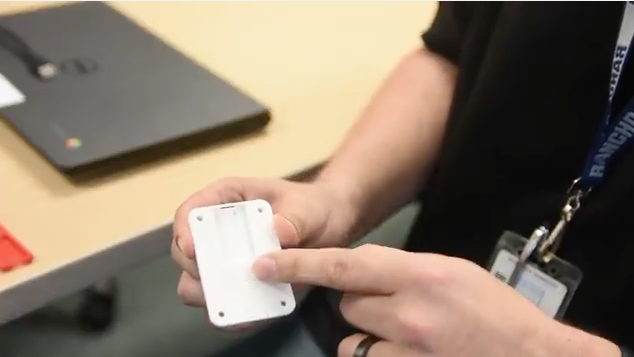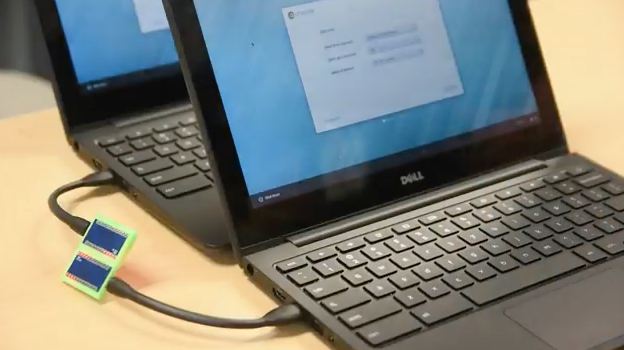STEAM
California, Pennsylvania, Vermont Schools Win filmMAKER Challenge
Digital Promise has selected winners for its filmMAKER Challenge, a competition supported by Chevron that encourages middle and high school students to learn about product design and filmmaking.
“Through the challenge, students were invited to reinvent an everyday product into something more sustainable, beautiful or accessible, and create a short documentary about their experience,” according to the announcement.
Digital Promise has chosen four winning teams from schools in California, Vermont and Pennsylvania to present the winning films and designs at the Bay Area Maker Faire in California, May 19-21, as well as the World Maker Faire New York, Sept. 23-24.
Rancho Minerva Middle School
Students at Rancho Minerva Middle School in Vista, CA designed an SD chip holder that assists the school’s IT staff in loading software and deploying laptops to students faster.
In the team’s video submission, Dewayne Cossey, director of information technology, said Rancho Minerva gets about 1,200 Chromebooks each year and IT manually configures each device using an SD chip. Originally, the design (see image right) used up a lot of space but was secure enough to hold the SD chip. Since Rancho Minerva does 3D printing, IT staff asked teachers and students to design a couple of prototypes.

The original case for the SD chip.
Nichole Santangelo, a design lab teacher, was tasked with figuring out how to take a decent design from Thingiverse, which didn’t quite fit their purposes, and put it onto Tinkercad, an online 3D design and printing app the students use. With help from a teacher's assistant and students, Santangelo was able to provide three prototypes: a single one, a back-to-back one, and a 10-piece prototype. After receiving feedback from IT, another student, Mariah Campos, came up with a side-by-side prototype that was more efficient.

The winning design.
“The design that really won out was this one where it is just two in tandem with each other in line, making it a lot easier for us to [configure] two Chromebooks at a time,” said Sebastian Rossi, system support technician at Rancho Minerva, in the video.
Rancho Minerva IT staff ordered 40 prototypes of the device. “Getting Chromebooks rolling is so much easier. It used to be such a hassle and a pain, and now it’s just plug and play.”
“To be able to share these types of solutions to speed up the process of Chromebook configuration in collaboration with our student design teams, we can really be the model between school district and IT and real world connections,” Cossey said in the video.
Edmunds Middle School (Burlington, VT)
A group of students at Edmunds Middle School decided to design a prototype with real social impact. The students created an affordable, heat-tested mitten for the homeless population in Burlington.
In the team’s video submission, students explain how they visited local stores and researched the best materials for creating their prototype. They tested different materials’ heat retention by putting them in snow and using Bluetooth temperature probes connected to iPads to collect data. They chose a combination of materials that tested at just 27 percent heat loss (compared to about 51 percent for all the materials), and the total cost per mitten came out to be $4.97.
South Fayette High School (McDonald, PA)
Two teams of students at South Fayette High School have been selected. The first launched Bag it Pro, an app that aims to improve the grocery shopping experience by saving customers time.
According to its short documentary, the team wanted to do more than scan barcodes and actually address customer complaints, like long lines at the checkout counter. Individuals can use the Bag it Pro app to look up product information, talk to supermarket staff and instantly checkout and pay for purchases.
“After this experience, we all learn a lot about the product design process,” a student narrator said in the video. “We all came together as a team and used all of our different skillsets and perspectives to create an app that we truly believe will innovate toward a better future.”
The second SFHS team designed a pill dispenser that uses a biometric lock and only dispenses the correct dosages when activated. The LockRx dispenser aims to combat the opioid addiction epidemic in the United States, according to the video entry.
About the Author
Sri Ravipati is Web producer for THE Journal and Campus Technology. She can be reached at [email protected].